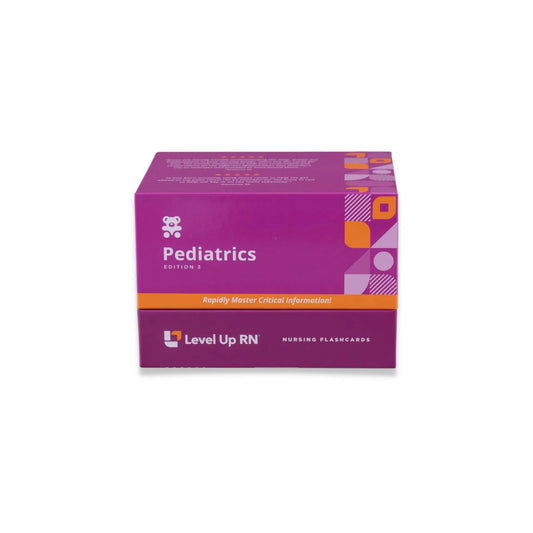Peds, part 31: Nervous Disorders - Conjunctivitis, Retinopathy of Prematurity
Updated: Cathy ParkesConjunctivitis (or pink eye), including the pathophysiology, signs/symptoms, treatment, and family teaching associated with this eye disorder. Retinopathy of Prematurity (ROP), including the pathophysiology, risk factors, signs/symptoms, treatment, and prevention of ROP.
Full Transcript: Peds, part 31: Nervous Disorders - Conjunctivitis, Retinopathy of Prematurity
Full Transcript: Peds, part 31: Nervous Disorders - Conjunctivitis, Retinopathy of Prematurity
Hi, I'm Cathy with Level Up RN. In this video, I am going to be talking about conjunctivitis and retinopathy of prematurity. At the end of the video, I'm going to give you guys a little quiz to test your knowledge of some of the key points I'll be covering in this video, so definitely stay tuned for that. And if you have our Level up RN pediatric nursing flashcards, pull those out so you can follow along with me.
First up, we have conjunctivitis, which you may know as pink eye. This is where we have inflammation of the conjunctiva and it causes redness, swelling, and drainage from the eye. It's very common and very contagious. Both my kids had conjunctivitis or pink eye when they were young and you know your kid has conjunctivitis when they wake up and their eyelids are glued shut from all that gooey yellow drainage related to conjunctivitis. So newborns can actually get conjunctivitis as well. And this is called ophthalmia neonatorum. So as the baby is being born and goes through the birth canal, if they are exposed to chlamydia or gonorrhea, that can cause this condition. So when babies are born, we prophylactically administer erythromycin ointment to the newborn's eye in order to prevent ophthalmia neonatorum. So in terms of symptoms of pink eye, I mentioned a couple of those when I was talking about my kiddos, so that includes redness, itching, swollen eyelids, crusting of the eyelids that causes them to kind of become glued shut and then purulent drainage with bacterial conjunctivitis is common.
Treatment for bacterial conjunctivitis includes the administration of ophthalmic antibiotic drops. If the patient has viral conjunctivitis, then that is usually self-limiting and may not require treatment. In terms of cleaning your child's eye, you want to make sure you're cleaning from the inner canthus outwards, so away from the unaffected eye, and you want to remove the crusts that form with warm, moist compresses.
Next up, we have retinopathy of prematurity or ROP. This is an eye disorder characterized by abnormal blood vessel growth in the eyes of premature infants, and this can lead to scarring of the retina as well as retinal detachment. So risk factors include premature infants as well as infants of low birth weight. Supplemental oxygen is another key risk factor for ROP. So when excessive oxygen is used in a premature infant, it greatly increases their risk of getting retinopathy of prematurity. Signs and symptoms include those abnormal blood vessels as well as white pupils, unusual eye movements, vision loss, and a detached retina. Treatment includes surgery as well as certain medications. But these surgical interventions are not without their own side effects. In terms of prevention, we want to make sure we are balancing the need for oxygen to maintain oxygenation of the blood while preventing ROP, so we need to make sure we're not using excess oxygen and maintaining oxygen saturation within the defined limits.
All right, it's time for a quiz. I've got three questions for you. First question, newborn exposure to which two infections during birth may lead to ophthalmia neonatorum? The answer is chlamydia and gonorrhea. Question number two, how do you remove the crust associated with conjunctivitis? The answer is with a warm, moist compress. Question number three, maintaining oxygen therapy within the defined limits can prevent what eye disorder in a premature infant? The answer is retinopathy of prematurity.
Okay, that's it for this video. In my next video, we will talk about visual and hearing impairments, so definitely stay tuned for that. Take care and good luck with studying.
So if the newborn is exposed to chlamydia or gonorrhea in the birth canal, it can cause conjunctivitis. I don't know why I have so much trouble with this word. First up, let's talk about conjunctivitis, which you may know as pink eye. This is where we have inflammation of the [inaudible].


